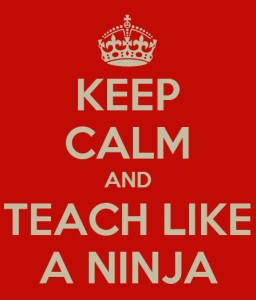A typical day as a Primary School teacher? As I ponder this question, I realise that there is no typical day working in a Primary School. It’s one of those jobs where you have to expect the unexpected. Every day is different as each day is a different structure, the teaching content is different and well, you never know the atmosphere of the class. When you work with, they can act and respond differently depending on the day, their mood, situations at home or even the weather.
I have worked several jobs in the past from retail to hospitality to call centres to office work and I can definitely say that teaching gives me so much joy and is one of the most rewarding jobs. When a child, after teaching a topic for days, is trying so hard to understand a concept that boggles their mind and suddenly everything clicks into place. They just have the biggest grin across their face, which is infectious, and they are so excited to show others their new found knowledge. It is that moment that you realised you have influence and educated that individual child, which is just an incredible moment.
Sometime I wish that my role as a teacher is simply arriving at school just before the kids arrival, stand in front of a class for a whole day then leave at three when the child depart. Unfortunately, this is not the case. There is so much more to being a Primary School Teacher than this.
Motivating students is what it’s all about!
As a teacher, my main goal is to motivate students to do their best and extend their own personal limits. I devise lessons daily, according to syllabus requirements, which expand on previous knowledge and encourage my students to explore new and interesting possibilities.
In my job, I set targets and then give opportunities and support to the children for these to be accomplished. I have to use assessment findings to help me tailor lessons to the children’s needs, where I ensure all the children in my class are appropriately engaged, challenged and making good progress. I am constantly marking and levelling their work to match the requirements of a teacher as well as assessing my class on a termly basis in writing, reading, spelling, grammar, punctuation, grammar, mathematics and science. I then have to place these results on a system, which magically compares previous results and looks at if the child to learning at a reasonable pace. Also, I give feedback to parents and careers either through those draining parents evening or those long, tiresome hours of yearly report writing.
As well as all the administrative tasks I do, I obviously need to teach and manage the behaviour of the class. I do believe that if children are engaged in learning and being constantly challenged, their behaviour will be much better. I like to create a positive atmosphere in my classroom, and therefore I constantly find things to praise children for, so that they want to do the right thing. Sometimes, this doesn’t work so I have to implement behaviour management strategies, where I take into account the class or the individual child. Behaviour management strategies which I have affective to use in my class have been class points, where if all the children listen and participate, they get a point on the board. When they have reached a certain number, they get a reward, which can be anything from watch YouTube or a Film or Free time or games afternoon. I also use individual reward charts with those pupils that are disruptive or other behaviour issues to motivate them to be part of the class or positively behave.
How the day starts …
My day starts with me being woken up by my alarm about six in the morning, where I drag myself out of bed. I am organised enough to prepare my work clothes the night before consisting of black trousers and a smart/ causal blouse. During the day, I could be working with paint or crawling across the floor so I make sure I have specific clothes to wear as a teacher. After preparing my packed lunch and eating breakfast, I search for my car to drive to school at about seven. Luckily, I live ten minutes’ drive away, so I listen to the local news on my way. Punching in the pin at the door, I let myself through the door to walk to my classroom to shove my belongings in the cupboard before heading to the staffroom to make myself a cuppa of tea.
Once there is a bit of caffeine in me, I look through my plans for the day and make sure I have all the resources ready: photocopying, equipment, SmartBoard slides or materials. Quite often there are more worksheets to copy for the class so walk to the photocopier, which is congested with other teachers rushing around sorting out material. Just before the children start to dribble in, I set up each table with the morning, which the students do once they have arrived, and chat about the plan for the day with my lovely teaching assistant.
As the kids flood into the classroom, they register themselves and start on the task I have set. Every day, I have a queue of children wanting to speak to me as I try to settle the class. The children have about fifteen minutes before the bell will ring and I start doing a guided reading task with a group.
At quarter past nine, the children come to floor to start a Maths lesson. I start with a fun game either to see what they already know or consolidate what we did the day before. Next I introduce a new concept or theory, showing them how to solve and complete the problem with examples. I see who understand by giving question and letting the children answer on their whiteboards in front of them. Once I am confident that the majority of the class understand, I send them away to complete either a worksheet or activity around what I have just taught them, while I continue to work with those who are struggling. Towards the end of the lesson, the kids show me their thumbs to tell me how confident they are about what we learnt. This is the kind of structure for each lesson, but I do different activities which include drama, painting, experiments etc.
Next is break time, but for me I’m rushing around sorting out the next lesson, which actually is very much like my lunch. For the rest of the day, I teach an English lesson, then a short spelling or handwriting lesson, then lunch and reading and in the afternoon, there is usually an assembly and another lesson: science, history, topic, art, design technology, cooking, physical education or religious studies.
As the bell rings at twenty past three, the children line up and I take them out to the parents. After school, I am usually marking or planning or attending a meeting or making resources. The clock ticks six thirty. Time to go home.



Josie
#Great blog post! Sounds very much like a typical teacher day!